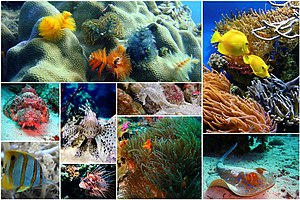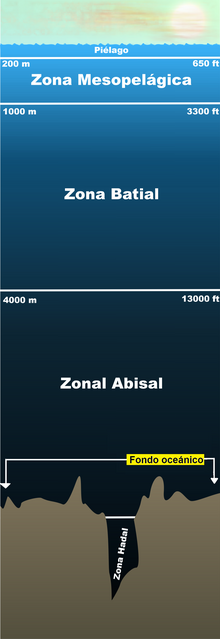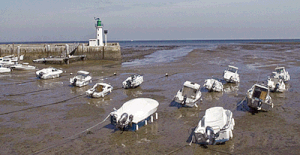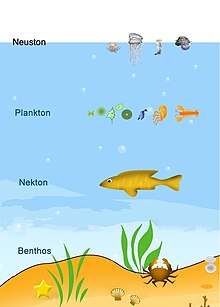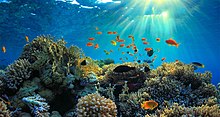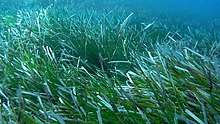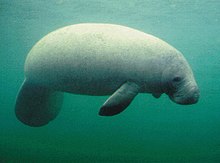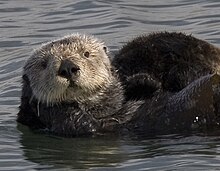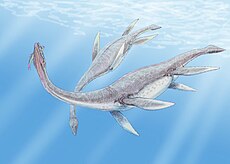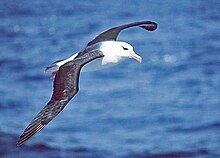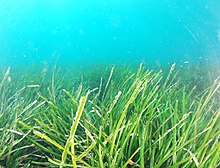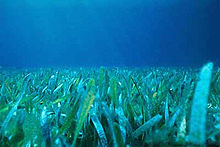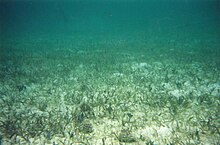Marine biology
Marine biology is the branch of biology that studies marine life, which includes the study of the flora, fauna, fungi and microbiome of the sea, as well as the marine communities that they make up. It is mainly concerned with the description, biological classification and scientific research of the species that constitute marine ecosystems and the oceanic environments in which they inhabit with the help of auxiliary disciplines such as marine geology, its main objectives also being the environmental conservation of the sea and the integral maintenance of all the organisms that live there, as well as the adequate management of the natural resources of their habitats through prior planning for conservation and the implementation of the necessary measures to eradicate or at least reduce devastating problems such as marine pollution or overfishing.
Marine biology includes the study of organisms ranging from microscopic plankton to huge cetaceans such as whales, among which are the largest living beings on the planet. However, it is noteworthy that the oceans cover approximately 71% of the earth's crust, in view of which it is also important to take into consideration that most of them, especially in their deepest and most inaccessible points, remain totally unexplored due to the high pressures and little or no sunlight that reaches those areas. It is for these reasons that, according to the Census of Marine Life, which is one of the most precise studies that have been carried out in terms of the total count of the richness of marine species, it is estimated that Until now, only 9% of life in the oceans has been investigated, so most of it corresponding to around 91% of the species that inhabit the sea would still be unknown, since they have not even been discovered yet.
For some, more than a branch of biology in itself, it is a multidisciplinary application system in which other sciences such as geology, geography, chemistry, physics and biology itself are involved, essential for the global and correlated study of the phenomena that characterize the marine environment. It is also closely related to oceanography, which is subdivided into three main branches: physical oceanography, chemical oceanography, and biological oceanography.
History
The importance of the contributions of marine biology to the study of the history of life in general lies in the knowledge that life most likely originated in an aquatic environment, since water is an essential substance for the development of life, as well as the discovery that during the Late Devonian period approximately 400 million years ago marine organisms inhabiting the then hostile oceanic environment gradually developed adaptive changes in their respiratory systems and motor limbs that would allow them to breathe and move in the terrestrial environment, resulting in the phenomenon known as rising waters. This in turn would later lead to an unprecedented diversification of a large part of the species, with which it has been concluded that today's mainland organisms had their origin in water, that is, that terrestrial living beings At present they are descendants of aquatic organisms, having as a common ancestor the first marine organisms that conquered the terrestrial surface.
In terms of the history of biology, the study of marine biology can be traced back to the biology of Aristotle, whose observations of life in the sea around the island of Lesbos laid the foundation for many future discoveries. In the 13th century, Samuel Gottlieb Gmelin published Historia Fucorum, the first work devoted to marine algae and the first marine biology book to use Linnaeus's new binomial nomenclature. British naturalist Edward Forbes is generally regarded as the founder of modern marine biology. The pace of marine biological and oceanographic studies accelerated rapidly in the course of the 19th century.
Observations made in the early days of marine biology were fueled by the Age of Discovery and subsequent exploration. During this time, a great deal of knowledge was gained about life in the world's oceans. Many trips contributed significantly to this body of knowledge. Among the most significant are the voyages of HMS Beagle, in which Charles Darwin elaborated his theories of biological evolution and the formation of coral reefs. Another important exploration voyage was the Challenger expedition, in which an unexpected diversity of species among marine flora and fauna, which stimulated theories of population ecology that tried to explain how such a variety of life could be maintained in an environment that was believed to be so hostile. This time was important for the history of the marine biology, but naturalists remained limited in their studies because they lacked the technology that would allow them to adequately examine the species that lived in the depths of the oceans.
The creation of the marine laboratories was important because it allowed marine biologists to conduct research and process their specimens from expeditions. The world's oldest marine laboratory, the Roscoff Biological Station, was established in France in 1872. In the United States, the Scripps Institution of Oceanography dates from 1903, while the prominent Woods Hole Oceanographic Institution was founded in 1930. The development of technologies such as sonar navigation, scuba equipment, underwater submersibles, and unmanned underwater vehicles allowed marine biologists to discover and explore life previously thought to be non-existent in the depths of the underwater environment.
Ocean dynamics
Their study is important to understand factors such as the distribution of marine species and fish migration.
Tides
The tide is the periodic change of sea level produced mainly by the gravitational pull forces exerting the Sun and Moon on Earth. Although this attraction is exercised above all the planet, both in its solid, liquid and gaseous part, we will refer in this article to the attraction of the Moon and the Sun, together or separately, on the waters of the seas and oceans (see also the tide of the planet Earth).
Other occasional phenomena, such as winds, rains, flooding of rivers and tsunamis, cause local or regional variations of the sea level, also occasional, but cannot be called tides, because they are not caused by gravitational force or have periodicity.Waves
Ocean currents

An ocean current or marine current is a movement of waters in the oceans and, to a lesser extent, of the most extensive seas. These currents have many causes, mainly, the earth's rotation movement (which acts differently and even opposite at the bottom of the ocean and on the surface), as well as the Earth's translation movement, the coastal configuration and the relative location of the continents. On the other hand, the constant or planetary winds are practically a non-existent cause, since some coincidences between the currents and the planetary winds are due to the sharing of a common cause, that is, the astronomical movements of the Earth.
Thus, it is often understood that the concept of marine currents refers to water flows on the surface of the oceans and seas (as can be seen on the current map) while submarine currents would be but movements of compensation for surface currents. This means that if on the surface the surface waters go from east to west in the intertropical zone by inertia (due to the Earth's rotation movement, which is from west to east), in the bottom of the ocean, the waters will move following that rotation movement from west to east. However, it must be borne in mind that the waters in the submarine bottom travel with the same speed and direction as the bottom, that is, with the same speed and direction as the earth's surface below the oceanic waters. In the ocean floor, the enormous pressure of the waters is what causes a uniform temperature of such waters in a value that is about 4 °C, which is when the water reaches its maximum density. As is logical, there will be no relative displacement between the bottom of the ocean and the waters that cover it because in that background, both the Earth and oceanic, they move at the same speed. However, there is an exception in the cold currents of the intertropical zone, which is due to the rise or rise of cold waters from the submarine bottom when they arrive at the continental hedge near the coast.
The movement of compensation of marine currents is not only produced between the surface and the submarine bottom, but also on the surface itself, since, for example, the currents originating on the western coasts of the continents in the intertropical zone, which are of cold waters because they come from the submarine bottom, after a trip of thousands of km crossing the main oceans become warm currents contributing to the eastern coasts of the continent. These influence the climate, since, according to its temperature, they can bring heat and humidity to some regions or inhibit evaporation and rain in others (see the phenomenon of atmospheric subsidence).Classification of marine life
Generally, marine organisms are grouped according to their function, size, and habit of life.
- Bentos: Agencies that depend on the seabed to live either in the coastal zone or in the abyssal areas. Examples are benthic octopus, corals, crabs, etc.
- Pelagic species: organisms that do not depend on the seabed to survive, always finding themselves swimming in the water column. Pelagic examples are mackerel, whales, tuna, etc.
- Necton: Agencies that can offer resistance to marine currents (can swim). Examples of nectanic organisms are squids, sharks, dolphins, etc.
- Plancton: Agencies that can't resist marine currents (can't swim effectively), so they're at their mercy. Examples of plankton beings are most jellyfish.
- Zooplankton: Heterotrophic plankonic organisms, that is, they cannot produce their own food, so they get it from other organisms. An example of zooplankton are copepods.
- Fitoplancton: Autotrophic plankonic organisms with photosynthetic capacity, so they are able to produce their own food through sunlight. An example of phytoplankton are marine dinoflagellates.
- Ictioplancton: Larvae and eggs of fish that are floating freely in the seas until they reach enough size to stop being displaced by them.
- Neuston: Agencies that make up the pleuston and depend on the surface layer that separates the oceanic water from the atmospheric air (interfase) for its subsistence. An example of neustonic organism are the HalobatesSome kind of aquatic insect.
Marine fauna
The marine fauna is composed of non-chlorophyllous planktonic animals or organisms, and they are known from the terrestrial productivity point of view as heterotrophs. They comprise a multitude of shapes, sizes, and colors. The marine fauna is represented by several groups, from unicellular forms among which are protozoa such as dinoflagellates, foraminifera and radiolates, to vertebrate animals such as fish and invertebrates such as jellyfish, corals, sponges, crustaceans, stars of sea, molluscs, etc. Marine fauna is very important as it plays a crucial role in transferring the energy synthesized by phytoplankton to higher animals in the trophic chain such as fish, such as tuna and sardines.
In addition, marine fauna can be used as a bioindicator of water quality since the organisms that make it up respond quickly to changes in the environment, such as those that occur when there is emission of chemical pollutants and wastewater is discharged. In short, when an environment is contaminated with hydrocarbons or organic matter waste, some species lose a large number of individuals, which reduces their populations. Instead, other species are more resistant, in which case their populations increase. Thus, marine fauna can be considered an excellent bioindicator of the environmental status of a given ecosystem. However, it should be noted that each species responds differently to changes in the environment, so it is necessary to identify which species are the best indicators for a given parameter.
Marine fauna ranges from organisms that inhabit areas near the surface to the little-known abyssal fauna of the depths of the sea. In all these habitats, one of the largest groups are marine invertebrates, since they present very different shapes and behaviors, having been the first animals to evolve. They can be found in the most diverse environments and can be parasites of other animals. The main phyla of invertebrates are: porifera, coelenterates, flatworms, nematodes, annelids, arthropods, molluscs, and echinoderms. All these edges have representatives in the sea.
Within marine invertebrates are those benthic that are found inhabiting different types of substrates in oceanic habitats. These may be composed of fragments of plants, various sediments, macrophytes, filamentous algae, among others. Benthic organisms have been used as bioindicators in the evaluation of environmental impacts caused by the misuse of natural resources in the environment. Animals, plants and microorganisms, as well as their complex interactions with the environment, respond differently to changes in the landscape, providing information that not only indicates the presence of pollutants, but also their impact on the quality of the environment. ecosystems.
There are also nektonic invertebrates characterized by having a pentaradial symmetry and a calcareous skeleton that protects a large part of their body. Apart from some isolated very small and hard-to-find starfish skeletal ossicles, the most frequent echinoderm fossils are sea urchin shells, of which it is more common to find only scattered fragments. Several species are known from the Miocene, including some forms that lived permanently buried in sediments, as well as others, sometimes large, that lived on the seabed.
Marine flora
Macroalgae
The macroalgae are a type of marine algae of macroscopic size, multicellular in general and therefore differ from microalgae, which are microscopic in size and are unicellular. The macroalgae should not be confused with the sea meadow, which is a seabed populated by vascular plants and not by algae. Among the best known macroalgae are sargazo and kelp, which forms algae forests, one of the most important marine ecosystems.
The macroalgae can be green algae (Chlorophyta sensu lato) belonging to the Viridiplantae clade within the Archaeplastide group being the closest to the terrestrial plants, red algae (Rhodophyta division) that are outside of that clado but that also belong to the true Archaeplastida group, or pardas algae (Phodophyceae group) that are foundSeagrasses
The seagrass meadows are a type of marine ecosystems that are made up of angiospermas plants, which make up dense submarine grasslands attached to sediments (and substrates such as mud, sand, clay and rocks) in shallow areas along the coasts.
This type of meadows are considered to be the only marine plants that are completely submerged under the sea, occupying only 0.2% of the seabed. When the tide drops, these plants come to watch near the coast like a big green carpet.
Marine pastures perform extremely relevant functions such as being the temporary and permanent habitat of many marine species, absorbing CO2 atmospheric dissolved in water (blue carbon), serve as food to a number of organisms, regulate excess lighting during the day, reduce the movement of water, etc.Marine microorganisms
Marine microorganisms are of great importance because most of them carry out the decomposition of organic matter and primary production in marine ecosystems. Due to their great abundance, phytoplanktonic (chlorophyll) organisms such as diatoms are responsible for the greatest production, through photosynthesis, of oxygen per year on the entire planet; being greater than the production of all the forests, jungles and jungles of the planet combined. Most marine microbes are bacteria and microalgae, although a diverse variety of microfungi also exist.
Many of the marine bacteria are dispersed throughout the oceans enduring extreme conditions, which is why the vast majority of these are known as extremophiles. It has been estimated that about 70% to 90% of the biomass in the ocean is made up of microorganisms, playing a crucial role in the biogeochemical cycling of various elements, as well as in the cycling of nutrients in the sea. In addition, it is known that microorganisms in the oceans produce an estimated 27,000 tons of oxygen per year, which is about half of the oxygen in the oceans. the terrestrial atmosphere.
Organisms adapted to the sea
Marine Mammals
Marine mammals are a diverse group of approximately 130 species of mammals that have adapted to life at sea or depend on it for feeding. The term marine mammal does not designate a precise taxonomic package. In this group are included cetaceans (ballenas, dolphins and marsopas), the mermaids (manatites and dugongos), the pinnipedos (true targets, ottories and walruses) and some otters (the marine otter and the sea cat). The polar bear, although not an aquatic animal, is also usually grouped with marine mammals because it lives on sea ice for all or most of the year and its high degree of adaptation to life at sea.
Marine mammals acquired different features to adapt to life at sea, such as a generally larger size, hydrodynamic body shape, modified appendixes and experienced thermoregulation adaptations. The different species, however, adapted to marine life in different degrees. The most adapted are the cetaceans and the sirenians, whose life cycle runs completely in the water, while the other groups spend at least some time on the ground.
Although marine mammals are a charismatic megafauna and supported by environmental groups, many populations are vulnerable or in danger of extinction due to a long history of commercial exploitation to obtain fat, oil, meat, ivory and skin. Most marine mammal species are protected from commercial exploitation.Marine reptiles
Marine reptiles are reptiles that have adapted to aquatic or semi-aquatic life in a marine environment.
The first marine reptiles were the Messaurids, which emerged in the Permic period, in the Paleozoic era. During the Mesozoic, many reptile groups adapted to life in the seas, including known subtypes, such as ictiosaurus, plesiosaurios (formerly included in the group "Enaliosauria", mosasaurios, nothosaurios, placodontes, thalattosaurios, Thalattosuchia and sea turtles (of the order).
With massive extinction at the end of the Cretaceous period, marine reptiles were completely extinguished, except for sea turtles, and were replaced by marine mammals. At present, marine reptiles include sea turtles, marine iguanas, sea serpents and saltwater crocodiles.
Some marine reptiles, such as ictiosaurus and mosaurs, did not go to the ground and are born in the water, for they are presumed to be viviparous. Others, like sea turtles and saltwater crocodiles, put their eggs on the coast. Some marine reptiles also go to land from time to time to rest and sunbathe, as is the case of the marine iguana.Seabirds
Marine birds are a kind of life-friendly bird in marine habitats. While they are very different from each other in terms of their lifestyle, behavior and physiology, they often manifest cases of convergent evolution, since they developed similar adaptations to identical problems, related to the environment and feeding niches. The first marine birds evolved in the Cretaceous period, although modern families emerged in the Palegen.
In general, seabirds live a long time, reproduce later and in their populations there are fewer young individuals, to whom adults spend a long time. Numerous species nest in colonies, which can vary in size between a dozen birds and millions. Others are known to carry out long annual migrations, which lead them to cross the equator or in many cases surround the Earth. They can feed on the surface of the ocean or in its depths, and even among themselves. Some are pelagic or coastal, while others spend part of the year completely away from the sea.
The morphology of marine birds depends on many factors. For example, the symmetry of the body of birds is determined by the type and functions of its flight, which are grouped in the categories of hunting, displacement to places of nesting or reproduction and migration. A marine bird has, on average, a body mass of about 700 g, a size of 1.09 m and a total area of wings of 0.103 m2. However, these variables depend on the flight mechanism and the etiology of the species.
The seabirds have a long history of coexistence with man: they have provided food for the hunters, have guided the fishermen to the fishing banks and have led the sailors to the shores. Because several species are threatened by human activities, environmental conservation movements have taken them into account.Sea plants
A sea meadow is a seabed populated by plants angiospermas, monocotylenes, perennials and rhizomatous, belonging to one of the families of monocotyleons that have representatives in strictly salty habitats (not saobres or fresh water), in most of the world's oceans: Zosteraceae, Posidoniaceae, Cymodoceaceae, some genera of Hydrocharitaceae, and Rusional.
This association of marine monocotyleddons is polyphiletic if Hydrocharitaceae is maintained in it. In its phlogenetic definition, seagrass comprise all these families except Hydrocharitaceae. All these families belong to the "aquatic class" of the Alismatales order in its modern constituency (APG III, APWeb, global flora to genres edited by Kubitzki (1998), etc.), in older floras can be found in other orders such as Najadales or Hydrocharitales.Main marine ecosystems
- Coastal zone
- Normally it is considered a coastal zone, also called a neritic zone, to which it is found on the influence of the seas where light can penetrate deeply allowing the production of photosynthesis in algae and other organisms. Its depth is from 1 to 200 meters, this area is also called a gothic area because it receives light in abundance.
- Penumbra area
- This area is characteristic for receiving sunlight, although little, and for the transparency of the beings inhabiting this area. Its most characteristic fauna are octopus, squid, jellyfish, fish and plankton. Its depth is from 200 m to 1000 meters.
- Abisal zone
- This area is the widest part of the planet, but it has been badly explored, as only a certain number of ROV's and batiscafos have dropped. In this area there is no sunlight, so its inhabitants are black, brown and red. Its fauna is very extensive, ranging from copepods to the giant squid.
- Fairy zone
- Thus called in honor of Hades, the Greek god of the dead, this is the deepest oceanic zone on the planet. Only one batiscaf has descended to this area, the tritritre. Its fauna is scarce, composed of excavatory worms, some types of fish, holoturias and sea cucumbers. Its depth is from 6000 to 10911 meters deep.
Future of current research
One of the most active lines of research in marine biology today is the study of the life cycles of various marine species, mapping the areas in which they spend their lives, how ocean phenomena affect the organisms and the effects of countless other oceanic factors on their development and distribution. Only recently has it been possible to carry out some of this work with the help of technologies such as GPS, data loggers and underwater photography. Likewise, advances in underwater tracking devices are shedding some light on how little is known about unknown life forms that inhabit the great depths of the sea.
On the other hand, it is known that most marine organisms reproduce in specific places, in these places oviparous organisms such as sea turtles lay eggs, but only in certain seasons, then they spend their juvenile stage in a site and subsequently mature elsewhere. However, for a long time marine biologists have had no idea where many species are found during certain periods of their life histories. In fact, many of the areas through which some migratory species transit are still quite unknown since tracking instruments do not work for many of these species and the adverse weather conditions of the ocean are not favorable for the use of some technologies. But in many cases, these limiting factors are being overcome with the help of state-of-the-art technology embedded in vehicles like the submarine and the Submersible ROV.
Contenido relacionado
Irati Jungle
Polypeptide
Antioxidant

